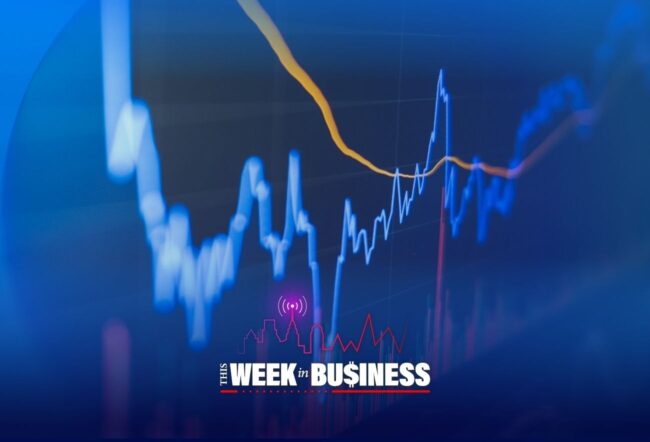It always helps to have a little extra wiggle room with money, even if it means easier access to credit cards. That wiggle room can spring up if the government picks up a chunk of your health care tab, bringing about a string of helpful spillovers. New Wharton research shows how those positive outcomes play out with Medicaid, a social insurance program that provides health care for Americans with limited income and resources.
Wharton finance professors Gideon Bornstein and Sasha Indarte found in their research that as more and more households become eligible for Medicaid, they have better access to credit. In their paper, “The Impact of Social Insurance on Household Debt,” Indarte and Bornstein show that a one percentage point increase in the Medicaid-eligible population in a zip code increases credit card borrowing by 0.46%. They studied credit bureau data of 10 million households between 2010 and 2021 and exploited staggered expansions of Medicaid across states as a natural experiment to uncover the causal effect of eligibility on consumers.
The authors also simulated the expansion of Medicaid in a model, which tracked the outcomes of the improved financial resilience of eligible households. Here, they used data on credit card usage, health expenditures and insurance, and the estimated effect of the Medicaid expansion on revolving credit card debt.
Households with newly acquired Medicaid eligibility take on more credit because they now have higher disposable incomes, and as their delinquency rate drops, they become eligible for lower interest rates, the paper explained. Those outcomes are driven by an increase in the supply of credit; both credit card limits and the success rate of credit card applications rise when Medicaid eligibility expands. They also looked at the effects through two other channels: the direct effects of Medicaid expansion on wealth and increased demand for credit from households. The direct and demand channels nudge consumers to reduce credit card debt, but these responses are more than offset by the increase in credit supply.
Health Insurance and Household Credit Card Debt
The model’s principal finding is that increased credit supply is the main force behind the overall increase in household debt. Specifically, the authors estimate that the expansions of Medicaid under the Affordable Care Act led to a 4.1% overall increase in credit card debt. The expanded eligibility for Medicaid also increases credit limits and reduces credit card utilization overall. Alongside, it also reduces “severe forms of default” such as debt in collections, while minor forms of default like delinquency either decrease or remain stable, and credit scores increase.
“What is special about credit cards, compared to other types of debt, is that credit cards are especially well designed to act like a substitute for insurance.”— Sasha Indarte
The increased credit supply also accounted for 32% of the net welfare gains of expanding Medicaid. The welfare gains are a measure of “how people value the expansion of Medicaid relative to a permanent increase in their consumption for the rest of their life,” Indarte explained. These gains reflect improvements to consumers’ financial wellbeing, net of the cost of taxes used to finance expanding Medicaid.
Although the model in the study focused on the effects of health insurance, it can be adapted to study the impact of other types of social insurance such as unemployment insurance, minimum wages, and disability insurance, the paper noted. Also, a similar model could be used to study how changes to insurance/risk exposure affect sovereign and corporate credit outcomes.
The paper focused on health insurance as a proxy for social insurance programs because it is a big source of financial distress for U.S. households. Citing prior research, the authors noted that nearly 30% of bankruptcy filers blamed medical bills for their woes, and that health expenditure made up 18.3% of U.S. GDP as of 2021.
Unsecured debt such as what a credit card provides is important for households. “What is special about credit cards compared to other types of debt is that credit cards are especially well designed to act like a substitute for insurance,” Indarte said. “If you lose your job, if you get sick, or if something bad happens, you could use a credit card to cover your groceries and other expenses.”
The paper lists a couple of data points to illustrate that: Four in 10 U.S. adults that anticipate difficulty in meeting an unexpected $400 expense expect to dip into their credit cards. And in times of financial difficulty, 43% of U.S. households report turning to borrowing, including from credit cards, after experiencing a decrease in income. “When unsecured debt functions as a de facto source of insurance, changes to social insurance could significantly affect households’ desire and ability to access credit,” the paper noted.
Takeaways for Policymakers
The study graphically captured the relationship between having unpaid/revolving credit card balances and income — it showed up as an inverse U-shape. It found that less than 25% of households with annual income below $25,000 have any credit card debt, but this share rises to 50% for households with an annual income of $100,000, and then declines as household income rises.
“A big takeaway from our study is that if policymakers don’t take into account how credit markets react to social insurance policies, they could significantly underestimate the benefits of expanding social insurance.”— Sasha Indarte
Capturing that inverse U-shape relationship is useful in studying policies that target low-income households, such as Medicaid, the paper stated. Typically, a household’s risk of default limits its credit access. By reducing this risk, social insurance programs like Medicaid can lead to better credit access, the paper noted.
“A big takeaway from our study is that if policymakers don’t take into account how credit markets react to social insurance policies, they could significantly underestimate the benefits of expanding social insurance,” said Indarte.
The paper is also “provocative” in how it challenges some conventional mindsets about households taking on debt, Indarte continued. “Debt can be a double-edged sword. While excessive debt can result in financial distress, access to credit can also serve as a lifeline in tough times and provide an important source of insurance.”
The Flip Side of Expanded Credit Access
Households with newly gained access to credit cards must, of course, use them responsibly. “If people get in over their heads with credit cards and make mistakes, that would limit some of the benefits of expanding social insurance,” Indarte cautioned.
For sure, improvement in credit access can become a negative when it leads to delinquency, or when it exceeds a healthy debt-to-income (DTI) ratio. For instance, Wells Fargo put that DTI ratio at 35% or less of income.
“If people are switching away from more expensive forms of borrowing, like payday loans, into credit cards, then even if people are prone to making mistakes with debt, those mistakes will tend to be less costly. In our model, cheap borrowing is a key reason behind the welfare gains that we estimate. In the model, there are people who used to pay a 400% interest rate, similar to the interest rate on a payday loan. And if they’re now paying a credit card interest rate of 20% or 30%, that’s a better form of borrowing for them.”



